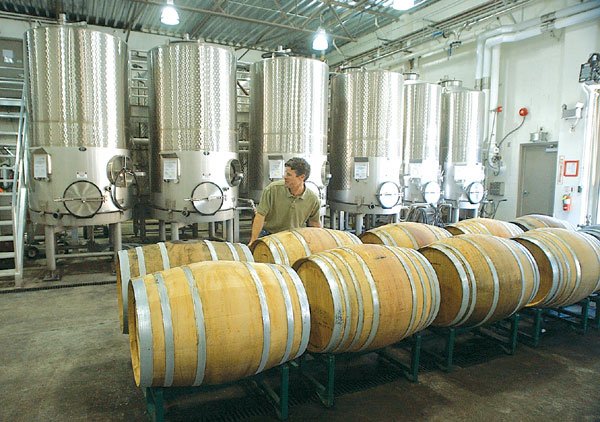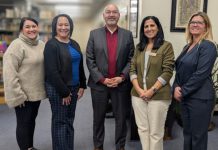SAN MARTIN
– Wine-making techniques around the world have changed little,
as parents have passed their knowledge to sons and daughters for
centuries.
SAN MARTIN – Wine-making techniques around the world have changed little, as parents have passed their knowledge to sons and daughters for centuries.
So what do winemakers just entering the market do when they’re competing against wineries that are using generations of accumulated information?
They make use of what they’ve got.
In Silicon Valley, that means using the latest technology, and Clos LaChance Wines in San Martin is doing just that.
From weather stations to computer tracking of grapes, Clos LaChance owners Bill and Brenda Murphy took advantage of the opportunity to outfit a brand new winery when they built their facility, which was finished in 2001.
“France has been doing this for thousands of years; California’s only been doing this for a couple of hundred years,” said Cheryl Murphy Durzy, director of marketing and distribution for the company and daughter of Bill and Brenda. “This is enabling us to get better wine, faster.”
The Murphys had been making wine for years before they moved the operation to San Martin. They started by planting a small plot of Chardonnay in the backyard of their Saratoga home in 1987, and released their first commercial wines from the 1992 vintage.
For the company, headed up by Bill, a retired director of Internet marketing at Hewlett-Packard Company, the blending of technology and tradition was a natural step.
It was also easier to make a new building high-tech than to try retrofitting an old stone winery, for example, said Clos LaChance Winemaker Stephen Tebb.
So they dove in, centralizing temperature control of the vats, for starters. Now all Tebb has to do is look at a computer screen to see where he needs to make temperature adjustments, instead of heading out to each vat and adjusting it manually.
They also installed a “night air” system that lets them draw in air from outside at night to adjust the temperature in the room, and they can set the parameters and the system kicks in automatically.
They can also plot the temperature fluctuations on the computer to see trends and how they have affected fermentation. That allows them to track, fine-tune and shape the fermentation to affect the outcome of the wine.
“We can open it up to retain the fruity essence, for example,” Tebb said. “It gives you a great degree of flexibility. It’s reproducible, too. You can go back and see what you did.”
Computer software also lets the winemaker track grapes from field to bottle. A process that used to involve checking tags and flipping through ledgers now can be done at the click of a mouse.
Tracking the grapes more quickly helps to save time on paperwork. Tebbs said filling out monthly regulatory forms for the government used to take a day and a half. Now it takes a matter of hours.
Technology has even found its way out among the grapes. The winery has weather stations in the fields to measure relative humidity, air temperature, wind direction and speed, leaf moisture and rainfall. They can also get a powdery mildew index to help them know when to spray for the mildew.
Previously, they sprayed on a set schedule. Now, they can skip a spraying if it’s not needed or adjust the time in between sprayings, said Vineyard Manager Ben Scorsur.
Scorsur has soil moisture probes hooked up to a computer back in his office, and can tell when it’s time to water a certain area by checking his computer.
Murphy Durzy points out, however, that some things stay the same.
“This doesn’t replace spending time in the dirt,” she said.
And other things can’t be controlled by technology.
“We are at the mercy of the weather,” Scorsur said.
Techniques and trends in wine-making have come and gone, and better science is helping people figure out which are worthwhile.
For example, Scorsur said, having cover crops in the vineyard used to be widely practiced, but fell out of favor.
“Science tells us now that it’s better for the soil to have a cover crop,” he said.
Even with all the high-tech tools at the winery, some techniques are pretty traditional. Scorsur said the winery is moving toward sustainable agriculture and is looking at ways to attract beneficial insects to the fields.
He pointed to some wooden birdhouses and perches in his office that were to go up in the vineyard. The houses are expected to attract owls and the perches to attract raptors to help control gophers.
So what does this melding of old and new mean for the wines?
Good things.
“The technology is utilized to improve upon the traditional method,” Tebb said. “You’re still fermenting grapes. You’re still making wine.”
And sometimes, figuring out whether do something differently in the wine-making process often comes down to a decidedly low-tech decision-making technique.
“It usually comes down to where the winemaker and I taste the wine,” Scorsur said.















